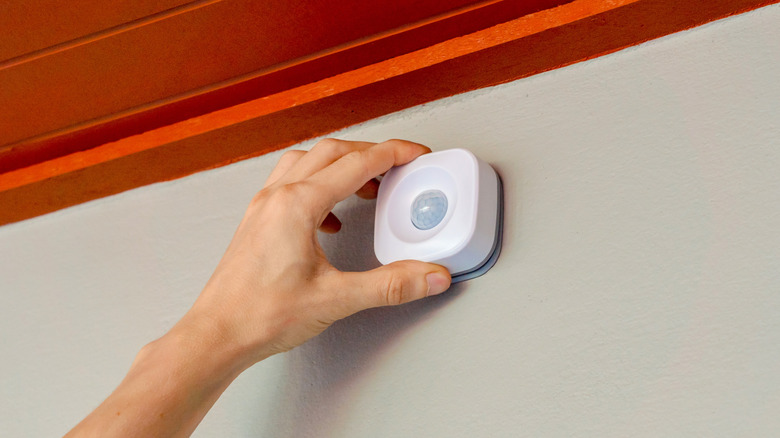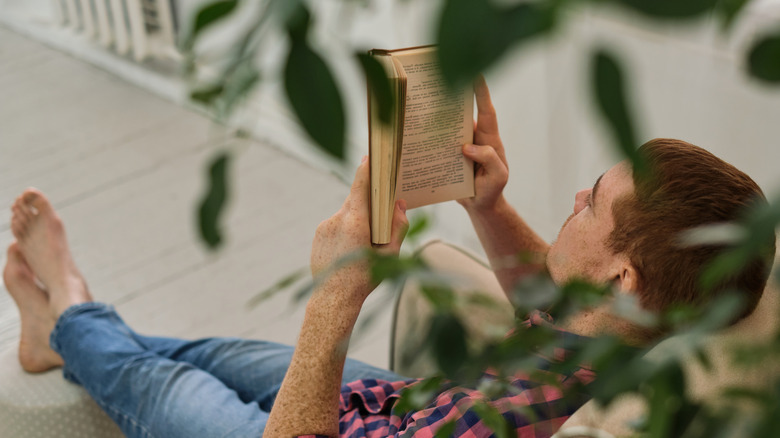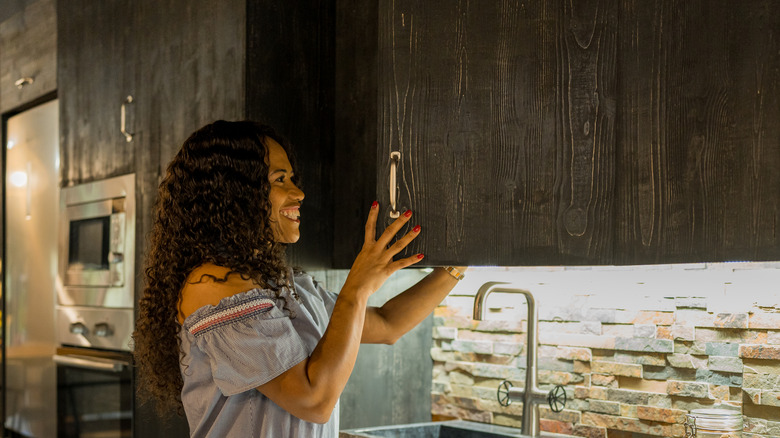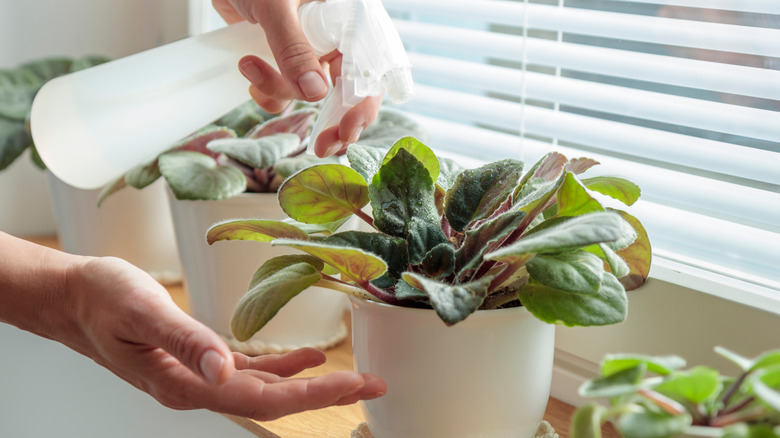5 Clever Uses For Motion Detectors Around Your House
We may receive a commission on purchases made from links.
A smart home is a convenient home. When you have smart devices handling things around the house and automating tasks for you, you barely have to do anything yourself. Your smart coffee maker can automatically brew your morning cup of joe before you wake up. The smart refrigerator becomes your kitchen assistant and helps you come up with dinner, based on what you have on hand. You don't even have to get up from your cozy spot on the couch in the afternoon — your smart blinds can close themselves when the light gets too harsh.
However, if there's one device that can transform your space into a smart home (besides the ever-popular smart plugs), it's a motion sensor. They're super affordable at only $20 to $40 on Amazon, and they offer a whole range of practical uses to make your home more convenient to live in. Yes, they're handy for purposes beyond security and surveillance. Here, we'll share five clever ways you can use motion sensors in your space, so that you can get the most out of them.
Detecting new mail
It is exciting to receive a new package in the mail, but if your mailbox is a distance away from your house, it can be quite the workout to trek back and forth just to check it a couple of times a day. Instead of going through such hassle, you can just use the magic of motion sensors to notify you from across your yard.
All you have to do is install a battery-powered motion sensor inside the mailbox. Then, when the mailbox is opened, the sensor will send a notification to your phone like it's normally programmed to do. If you want a fancier setup, though, look for a sensor that can be integrated with third-party systems like Alexa, IFTTT, and Home Assistant. This way, you can configure the motion sensor to trigger more noticeable notifications, such as a light in the living room or an announcement via the smart speaker. If you're worried about the distance of the sensor to your home, you can go for one with a long range like the HTZSAFE Driveway Alarm that offers a half mile reach and is already weather-resistant.
Creating soundscapes in particular spaces
Certain music can trigger certain moods, and what better way to use music in your home than to create soundscapes in certain locations with the help of motion sensors. The premise is simple: when you enter a room, the motion sensor will make your smart speaker play your music of choice, setting the atmosphere for that space. For instance, when you go into your reading nook, you'll automatically hear some bird sounds to get you relaxed for reading, or when you walk into your home gym, the smart speaker will start blasting some upbeat music for your workout session.
The easiest way to set this up is to use a fancy motion sensor like Loodio that already comes with a built-in speaker and some pre-installed songs. This type can already work on its own, so you won't have to deal with multiple devices and configurations. If you want to work with a less expensive motion sensor or already have one installed in your home, you can also try pairing it with an Amazon Echo Dot and making an Alexa Routine instead.
Setting your home on vacation mode
Motion sensors are one of the best energy-saving smart devices you can have for your home. While they're typically used to pick up movement, they're also equally effective at prompting events when they sense no activity. This feature can come in handy when you'll be away for vacation for a couple of days.
When the sensors notice that there's no one in the home for a full day, they can then set your home to vacation mode. This can mean triggering a few automations like shutting off your smart water valve to prevent flooding and save water, closing your motorized blinds to maintain privacy, and turning off the smart plug for your Wi-Fi router to conserve energy. You might also want your motion sensor to automatically adjust your HVAC settings. Then, once you come back, the sensor can detect your movement and turn off vacation mode.
For this set up to work, make sure to install the motion sensor where there's high foot traffic throughout the normal day — perhaps the main hallway or kitchen. Test the sensibility of the sensors too, to ensure that you don't get false positive movements.
Guarding secret storage
Let's imagine that you have a certain area or storage space in your home that is off-limits to others — perhaps a cupboard with important medicine or a drawer with confidential documents. To keep it secure without having to constantly guard it yourself, a motion sensor might just be what you need.
Simply place the sensor in an inconspicuous spot in the storage unit, and when someone opens it, the sensor can notify you via its dedicated app or with another device like your smart speaker or smart light. You could even add a hidden camera to the inside of the storage unit too. Then, when the motion sensor detects movement as the storage space is opened, the camera will start recording, possibly even sending you a live feed, so you'll know exactly who the culprit is.
Small motion sensors work best for this purpose, so you can install them discreetly. There are mini sensors like the GE CYNC Wireless Smart Motion Sensor or the Arlo All-in-One Sensor that you can check out.
Sending you plant care reminders
Indoor plants don't normally follow a strict watering schedule — you just water them when the soil already feels dry to the touch. Because of this irregular routine, it's easy to forget to water them at all, and before you know it, they're wilting away. To prevent your little greens from dying on you, all you need is one inexpensive smart home device: a motion sensor.
Have the motion sensor remind you to check your plants every couple of days. If the sensor doesn't detect activity near the plants for a week (which is typically the time when some house plants need watering), it should send you a notification prompting you to test the soil for dryness. If you find that some plants dry out faster, especially in the summer, you can adjust it to notify you every three or four days instead.
The placement of the sensor for this setup is crucial, so make sure to configure it properly. If you regularly pass by where your plants are sitting, you should limit the sensor's range to avoid false positives. Also avoid installation locations where the sensor might be blocked by the plants themselves.





